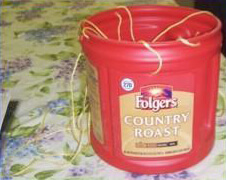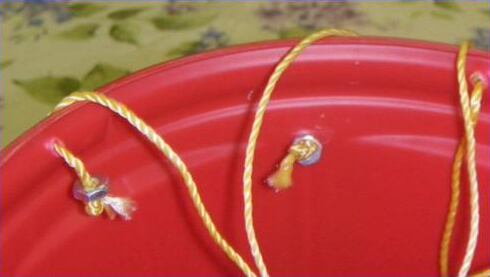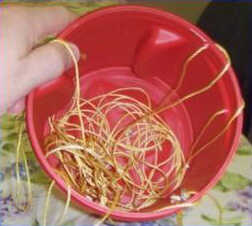Target Workplace Foundation Skills
Purpose
This is to use in the lesson
This lesson reinforces the concept of teamwork and the qualities and characteristics necessary to engage in productive teamwork. Through a brainstorming session and an activity, students will learn about the importance of teamwork on the job.
Review
This is to use in the lesson
5 Minutes
Ask students if they experienced instances where they utilized self-advocacy in their daily lives. How about instances of having to go along with the group? This lesson provides an opportunity to become a working member of a team that has a common goal.
Learning Outcomes
This is to use in the lesson
Students will identify at least four qualities of teamwork that were or were not modeled in the activities.
Teaching Strategies
This is for you
- The bean can game can be simplified to meet the needs of your group.
- You do not need to place a time limit on the game.
- Play the game in a large room or outside. It may be necessary to move desks out of the way to have enough space to play the game.
- Ensure all students understand the rules before starting the game. It is a good idea to check students’ understanding of the rules before starting. Let students know that disruption of the activity will not be tolerated.
- Review the worksheet with students before starting the game so they are ready to use it once the game is finished.
Required Materials
This is to use in the lesson
- Flip chart or chalkboard
- 1 one-gallon plastic or metal coffee can (pictured below)
- 6-7 lengths of twine, each 5–8 feet long (varying lengths)
- 6-7 1/4-inch nuts
- 1 five-pound bag of dry beans (e.g., pinto, navy)
- 1 foil turkey pan
- 1 small plastic bowl (6–8 oz.)
- Qualities of teamwork worksheet (9.1)
Assembly of the Bean Can
- Poke holes around the top third of the coffee can in random locations—seven holes are ideal. Poke as many holes as you made lengths of twine.

- Cut seven pieces of twine of varying lengths, from five to eight feet long. No twine should be the same length—cut some longer and some shorter.
- Insert the twine through the holes in the coffee can.
- Insert the twine into the nut and knot the ends.
- Secure the twine by tying a knot at the end of the twine, as shown in the picture on the right.

- The picture to the right shows the finished- bean can with the twine attached.

Activity 9.1: What Is Teamwork, Anyway? (10 minutes)
- Pair students and instruct them to brainstorm, as a team, as many qualities of teamwork as they can in five minutes. Tell them to try to list at least ten teamwork qualities. As a timesaving alternative, or if the class is small, have the entire class generate teamwork qualities together as you record them on the flip chart.
- Provide examples of teamwork qualities as necessary (for example, leadership, cooperation, patience, communication, sense of humor, working together, trust, compromise).
- Have each pair report their list of teamwork attitudes, qualities, and behaviors to the class. If the pairs did not brainstorm the list, continue brainstorming as a large group.
- Record each of the teamwork qualities, attitudes, and behaviors on a flip chart or board as you discuss the quality.
- Provide concrete examples to help students understand the qualities, attitudes, and behaviors.
- Inform students that the next activity will allow them to experience many of the qualities of teamwork and that their list will be revisited after the activity concludes.
Activity 9.2: Don’t Spill the Beans! (30 minutes)
In Activity 2, students practice the qualities of teamwork as they work together to move a rope-controlled bean can through various obstacles. Typically, students provide positive feedback about this activity.
- Divide students into teams of seven, or the number of students equal to the number of strands of twine attached to the one-gallon bean can.
- Explain to students that they will be asked to perform three teamwork tasks with the bean can and that their performance will be assessed by how quickly they complete the tasks and by the number of beans spilled while completing the tasks. Note: you may eliminate the time component if needed.
- Instruct the teams to form a circle around the bean can (repeat to give each team the opportunity to play the game) and review the following rules:
- Each member must grasp the end of a strand at the farthest-most distance from the can. Students may not hold the strand anywhere other than at the very end of the strand.
- Students may use only one hand to manipulate the can. At no point during the completion of their tasks may they utilize their other hand to shorten their strand or guide the can.
- Time starts when the can moves and stops when the can is sitting in the desired location.
- Ensure that each team coordinates the lifting of the can so that it is held level at all times. After each team has practiced raising the can, flip a coin to see (or decide in some other fashion) which team will go first. From this point, ensure the teams take turns performing the following tasks:
- With the can half-full of dry beans, the team must move the can to the top of a table at a prearranged location.
- With the can completely filled, each team must move the can to the tabletop.
- With the can completely filled, each team must move the can to the table and pour the beans into a plastic bowl until the bowl is half full (this bowl should be in the middle of the foil turkey pan so that the beans that fall into the pan may be easily counted).
- Keep track of the elapsed time using a stopwatch or other timing device; keep track of the amount of beans spilled during the completion of each task. Reward each team for their effort and determine a winner for each task by comparing the speeds of the teams with the number of beans they dropped during the task.
- Explain that the next activity will allow the students to think about the characteristics of teamwork they just observed or used while completing the bean-carrying task.
Activity 9.3
Activity 9.3 will allow students to reflect on the bean can game to define various qualities of teamwork experienced in the prior activity.
- Have students complete Worksheet 9.3 by identifying at least four qualities of teamwork that were evident in the work of their teams. They must provide examples of where and when they saw the qualities.
- Review the teamwork qualities identified in Activity 9.1 from this lesson. Add any workplace skills related to teamwork that were not on the teamwork list developed in Lesson 1 or Activity 9.1 from this lesson.
- Engage students in a discussion about whether people from different cultural backgrounds have different values and how that impacts teamwork.
Worksheet 9.3
Name:
Directions: Identify the teamwork qualities you observed during the bean-can activity and explain where in the activity you saw that quality.
| Teamwork Quality | What was the action you observed? Evidence: |
|---|---|
| |
|
| |
|
| |
|
| |
| Teamwork Quality | What was the action you observed? Evidence: |
What were your thoughts and feelings during this time? |
|---|---|---|
| |
||
| |
||
| |
Which of the above qualities was the most important to your team?
List any qualities that you wish your team had had during the activity.
Check for Understanding
This is to use in the lesson
- What were examples of communication during the bean-can activity?
- Ask students to provide examples of when problem-solving was used in the activity.
- People working for a company are often viewed as being part of a team working toward the same goal. Can you think of a workplace scenario in which teamwork can be found that is similar to this activity? Explain the example.
